“If somebody's going to pay money to come see you perform, then it should be something to see.” -Michael Trent
The past two weeks at Starts With A Bang have been awesome for all we've covered, even with a (brief) vacation on my part thrown in there. (Don't worry, you'll get the best of it this weekend!) Here's what we've looked at, in case you've missed anything:
- Could dark matter not exist? (for Ask Ethan),
- Epic stop-motion karate duel (for our Weekend Diversion),
- Underneath your clouds (for Mostly Mute Monday),
- How does gravity escape from a black hole? (for Jillian Scudder's Astroquizzical),
- How to soar on Venus,
- The physics of fireworks (for Throwback Thursday),
- Could it all come crashing down? (for our other Ask Ethan),
- Edgar Allan Poe's Eureka and the Big Bang (from Paul Halpern),
- Solar system answers (a response to the xkcd comic of questions), and
- Do you know your planets? (for the latter week's Throwback Thursday).
Plus, I published a new piece over at Forbes:
There's two weeks to catch up on (since I was actually on a brief vacation for a long 4th-of-July weekend), so let's dive into your Comments of the Week!
From Omega Centauri on dark matter vs. MOND: "We now have claims for hundreds of “dark galaxies” in the Virgo cluster. These are described as roughly the spatial extent of the Milky Way, but with a thousand times fewer stars. The claim that they are 99% dark matter is also made. Supposedly the cluster is dense enough that the gas/dust might have been stripped off, but the DM remains, so that the ration of dark matter to baryonic matter is much higher than for “normal” galaxies. If we can observe galaxies with different DM/BM ratios, I think this would be very tough to explain with something like MOND."
You've got to understand that dark matter is very good at something: it's outstanding at experiencing the gravitational force and nothing else. Normal matter, on the other hand, experiences the gravitational force and the electromagnetic force and the strong nuclear force, which means it sticks together, it collides with itself, it undergoes inelastic collisions, it absorbs and emits light, etc. When you form any type of structure in the Universe, it's expected that you start with a uniform mix of dark matter to normal matter -- about a 5 to 1 ratio -- and then allow star formation and galaxy mergers to proceed as normal. The normal matter will:
- Stick together and "clump" in ways that dark matter won't, and
- Get ejected when its velocity exceeds the escape velocity of the combined gravitational potential.
Large DM-to-baryon ratios are predicted by dark matter models wherever gas is stripped, like in some of the (smaller or more violent) Virgo cluster galaxies. But in isolated regions, too, it's expected to get worse the smaller you get. In particular, for Segue 1 and 3, the smallest galaxies known with only ~1,000 stars but hundreds of thousands of solar masses in total mass (mostly DM), this is a spectacular confirmation. (A different dwarf galaxy is shown below.)
The reasoning is as follows: you form a clump of matter with the standard 5-to-1 ratio between DM and normal matter. Then you get a burst of star formation. What happens? You produce stars, intense UV light, all sorts of radiation (both photons and particles) and in short order, supernovae. All of these give off a tremendous outward flux, enough to impart some of what they interact with with an escape velocity. The shallower your gravitational well, the easier it is for the flux-absorbing matter to escape.
From Sinisa Lazarek on gravity escaping from a black hole: "Nothing has to escape from within event horizon. The gravity of BH to the outside observer comes from event horizon, not beyond it. And there is no need to tackle gravitons in order to understand this, just regular GR."
It's a reasonable question! But here's the thing: the fabric of space is a continuous fabric; the only discontinuities are at singularities, knots or other topological defects (like cosmic strings) that can theoretically be present. Inside the event horizon and outside the event horizon are only interesting from our observer points-of-view; they're a barrier to particles and quanta of radiation. But for the curvature of space itself, there's no problem. As Jillian said:
But the event horizon itself doesn’t describe a physical boundary to the influences of gravity. The gravitational well itself exists continuously outside and inside of the event horizon — outside of the event horizon it’s just slightly less steep.
If you're confused because you're thinking about gravitons moving at the speed of light, please remember that they are just a calculational tool to help us out: virtual particles aren't real. If you calculate what's happening outside the event horizon and inside the event horizon, not only is everything kosher, but what you calculate at the boundaries (at the event horizon itself) actually matches up. There's no discontinuity in GR at the event horizon, which is exactly what we wanted.
From PatrickCS on soaring on Venus: "If it would work on Venus then why not on Earth? You do not need an envelope of 1″ steel, as a few microns of titanium would be just as impermeable. Fill it with helium and you are away."
There's no such thing as a completely impermeable anything, not when it comes to atoms or molecules. If you've got helium atoms inside, you'd need a solid bound together so tightly that the spaces between the atoms in the solid are smaller than the helium atoms itself, and such a solid does not exist. So you need to make it thicker, so that the probability of atoms making it out is sufficiently depressed.
I was a little overly cautious with my 1" of steel estimate; probably half an inch (about 1.3 cm) would be sufficient. A few microns of titanium, though, you say? I don't have stats on titanium's permeability, but I seriously doubt it's tens of thousands of times less permeable than steel. Also, titanium has a problem at high temperatures (which some atoms in the atmosphere will have): it reacts with nitrogen & oxygen, becoming very brittle. I'm not saying titanium wouldn't be an interesting choice -- especially here on Earth -- but go with micron thickness and you're coming down to Earth in a heap of catastrophe.
From Sean T on the physics of fireworks: "It is possible to determine how far away a firework is igniting in much the same way that you can do so with a lightning strike. Wait for one of the bright white flashes, followed by a loud boom. You will see the white flash before hearing the boom. Measure the time (or estimate it) between seeing the flash and hearing the boom. The distance to the firework is approximately 0.2 miles per second of time delay."
The difference between the speed of light and the speed of sound is a very useful thing to know. You can effectively treat the speed of light as infinite, and the speed of sound in air is normally around 340 meters-per-second (or ~1100 feet-per-second). Very high fireworks can reach elevations of around 600-800 feet, typically, and can occur anywhere from directly overhead (fun!) or a mile (about five seconds) away. I'm not great at measuring fractions-of-a-second without precision tools, but I can count Mississippis, and so can you. Extra fun, I suppose, for my readers in the Scandinavian countries, whose per-capita fireworks consumption put the USA to shame!
Image credit: Philosophy of Cosmology / University of Oxford, via http://philosophy-of-cosmology.ox.ac.uk/cosmos.html.
From Chris Mannering on scientific revolutions: "Give or take the odd one, approximately every empirical revelation of the last 40 years has come as a total shock. So where are the scientific revolutions? What happens is the model is modified and the shock vanishes before showing up later in the common parlance like it owns the place. Most of the exhibits you reference in your piece were shocks. The large scale structure wasn’t expected. It caused a major crisis back in the early 90’s. Astronomers were throwing their hands up they knew next to nothing about this cosmos."
This is a very pessimistic history of my sub-field of expertise, and one that I personally think is very unfair to those who were working in physical cosmology during that time. The large-scale structure was totally expected, for example: there were only arguments over whether it would be more of a top-down (large scales form first) or bottom-up (small scales form first) scenario. The former was advocated by Zel'dovich and the latter by Peebles, going all the way back to the 1960s and 1970s. When they found it in the 1990s and measured it, it caused a crisis only among the astronomers who weren't aware, or who expected something different.
You'll read headlines all the time today about "such-and-such baffles astronomers" or "defies cosmic expectations" or "object that shouldn't exist," and it's all absolute sensationalist rubbish. We have a range of uncertainty on what we know, and all the observations fall within that range. The biggest surprise we've gotten (or are ever likely to get) are in the cases where we've dishonestly fooled ourselves about how large or small the uncertainties truly are.
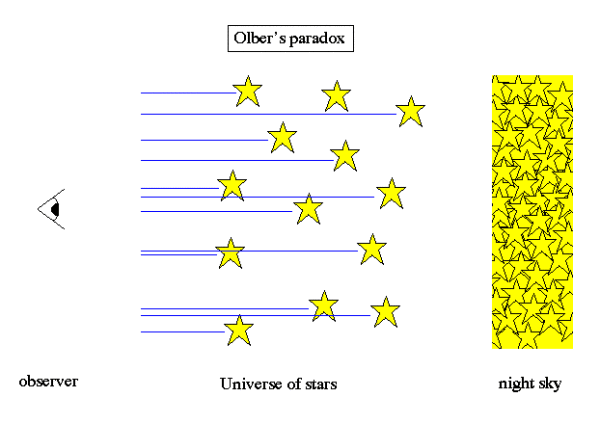 Image credit: James Schombert of the University of Oregon, via http://abyss.uoregon.edu/~js/ast123/lectures/lec15.html.
Image credit: James Schombert of the University of Oregon, via http://abyss.uoregon.edu/~js/ast123/lectures/lec15.html.
From Alan D. McIntire on Olbers' paradox: "True, the universe DOES have a finite age, and it IS expanding, but in theory, Olbers paradox could be explained away if the distance between stars were large enough, the average intensity in each direction could be 3 K, or even higher, as long as it was low enough that we couldn’t detect it solely with our vision."
The problem with this reasoning is that there's a difference between intensity (which is a brightness) and a temperature, which provides the spectrum of light. The crux of Olbers' paradox is one that you encounter if you do your very first three dimensional integral: the amount of "stuff" you see in any one direction if you live in an arbitrarily large sphere of uniform density. It's infinite! The whole point is that eventually, if the stars lived forever and shone forever in all directions, anywhere you looked, your line-of-sight would eventually run into a star. Even if there were dust to block it, that dust would eventually heat up and radiate in the visible, and you'd see that, too.
If the Universe were expanding and radiation was redshifting, then your explanation could work, even in an infinitely old Universe. But in a static, non-expanding Universe -- something taken for granted in the 19th century -- this explanation simply wouldn't cut it.
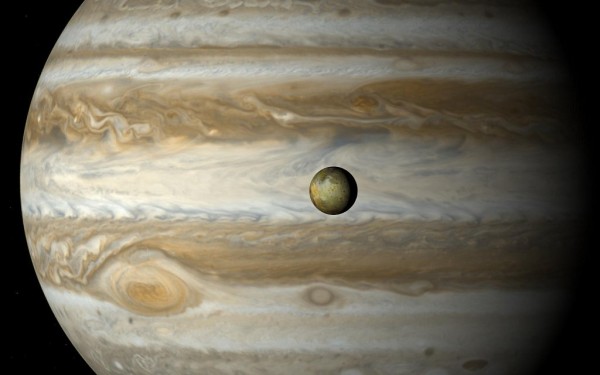 Image credit: Io and Jupiter, made with Celestia, via http://fisica.cab.cnea.gov.ar/estadistica/abramson/celestia/gallery/sli….
Image credit: Io and Jupiter, made with Celestia, via http://fisica.cab.cnea.gov.ar/estadistica/abramson/celestia/gallery/sli….
And finally, from PJ on my solar system quiz(zes): "trust you enjoyed the weekend J4 break. A great little quiz; should be more of it as a self-test, perhaps, with no answers ’til the following week. Missed out on Jupiter polar view, and Neptune's rings."
I'm no good at building suspense, but perhaps a "where in the Solar System" feature would be a way to do that, with answers to the previous edition appearing in the next article. The poles of the gas giant planets (except Uranus) are tough, because we never see them from our vantage point on Earth; it takes a spacecraft to get a good view of what's happening there. The rings of the four gas giant worlds, though, they're all so unique!
Saturn's are the most spectacular; Jupiter's are very, very faint (the most diffuse of all, in fact); Uranus' are quite prominent and visible in the infrared even from modest Earth-based telescopes; and Neptune's rings, well, they come in at #3. But they're pretty spectacular, particularly as imaged by Voyager 2.
Thanks for a great week (or two), everyone, and we'll have more wonders of the Universe coming up. For those of you keeping up with our Patreon, we're less than $100 away from unlocking the next reward, and I can't wait for it to happen!

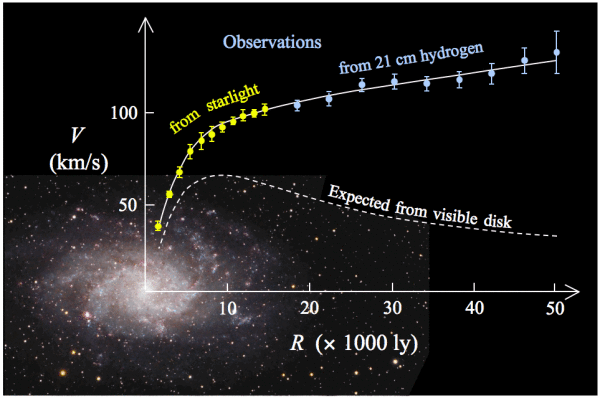
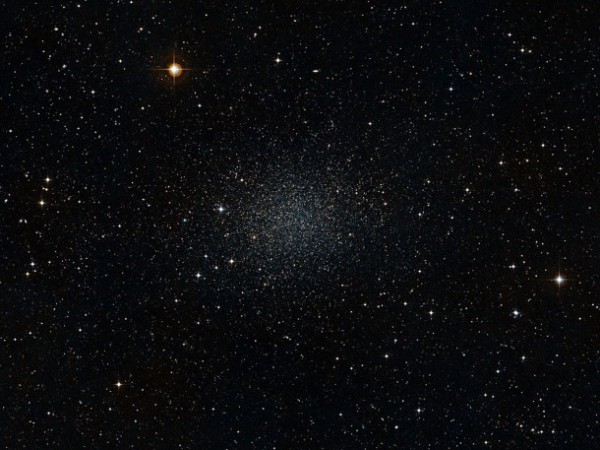
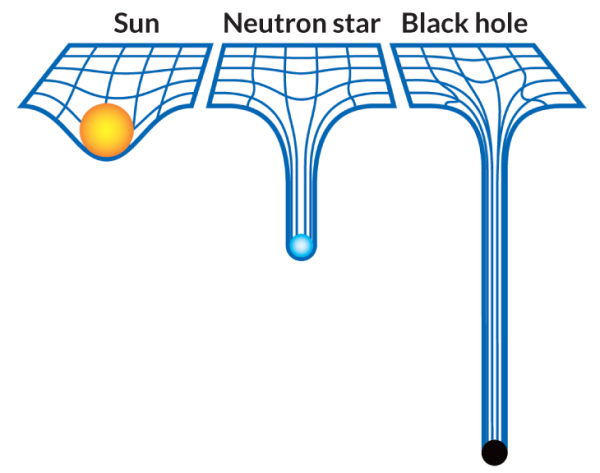
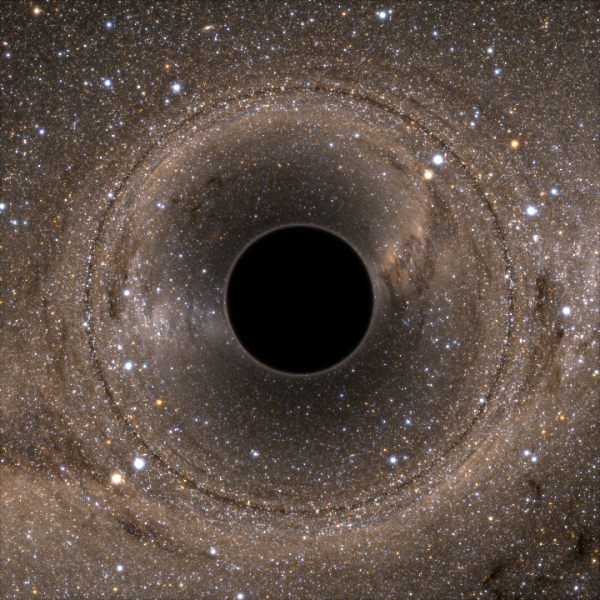



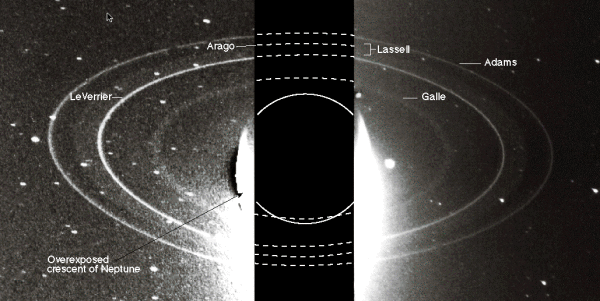
I have tried John Hopkins; Neil deGrasse Tyson; Elon Musk; Thinking about Why but Wait; but; the Timing iS Absolute ly in favour of U. Can u help me; my Self & i; solve a question, that i have.?. Thank You & Sincerely, O;)
ET has contacted us!
@Ethan and all who answered
My dissatisfaction with the explanations of how gravity can escape a black hole actually has nothing to do with the question presented. If the question had come up 30 days ago I wouldn't have given it a second thought. The answer seems obvious, but then Ethan gave an explanation in CotW#65 that I still can't wrap my head around, and if true then I now don't understand this answer.
The issue was with super high temperatures recreating the potential that caused our Universe to inflate, cosmically. Even before you actually reach the singularity, you should achieve those temperatures. If the theory is right then black holes should be creating new space faster than the speed of light.
In that answer I was informed that cosmic censorship would prevent the new space from escaping beyond the event horizon, but that would mean gravity inside a black hole does not decrease with distance the same way gravity outside a black hole does. The singularity is moving away from the Event Horizon at the speed of cosmic inflation but the Event Horizon stays right where it was.
I do not understand how to reconcile the idea that gravitational information cannot make it to the Event Horizon, with the idea that same gravitational information can make it to outside space.
1) Gravitational information CAN make it to the event horizon.
This will be enough to make your incomprehension moot.
2) If you mean "can make it to outside space from INSIDE" (and note: if you can't get your claims right in stating your problem, is there any fucking reason other than yourself why answers "has nothing to do with" what you MEANT. Try asking the right bloody question next time), then the answer is either two ways via Ethan:
a) There is no information getting out from INSIDE, since the field doesn't get out, it is a certain value AT and OUTSIDE the horizon, and that value creates the gravitons that you have so much self-manufactured puzzlement over
b) Gravitons do not exist as real bullets that fire out from the mass to elsewhere, they are VIRTUAL. They are used to describe the phenomena and are abused if you take these virtual particles and try to pretend they are real.
But like I said, if you meant "can make it to outside space from INSIDE" instead of what you SAID, then the entire reason why people's answers aren't satisfying your ACTUAL question is that YOU'RE NOT ASKING YOUR ACTUAL QUESTION!!!!
And I believe you're doing that deliberately.
"And I believe you’re doing that deliberately."
Haha no one really cares what you believe
Then why did you need to quote it and reply, raggie?
hehe, I gota thump the goldfish bowl every now and then..
Yeah, backpeddle from your "I don't care what you think, I WANT YOUR ATTENTION! PLEASE NOTICE ME!!!!"
I haz a storker! LOL!
@#1
Perhaps you should try asking the question, then you might get a reply. :)
Backpeddle? You Idiot twat you even delude yourself.
"Dark matter just phoned me. It doesn’t give a shit."
You delusional Fuckwad, you constantly spew how know one gives a fuck twit FIG what someone "THINKS" OR Opines" then you Verbal Jack Off your Poetic spittle all over the place as though you are "above the fray".
BWAh_haha_Bwaha_haha LMFAO. Ethan PLEASE DO NOT BAN THIS IDIOT from the forum as the clarion call has been the last month
Wowzer is cheap entertainment. 40 Year old Virgins are tough to come by.. Keep him around.
Oh dear, are we slipping into the inevitable 'black hole' again?
New Horizons will fly by Pluto Tuesday. Surely that is more interesting than a ' shit-slinging match '?
Well, according to some, really dense matter (raggie, for example) sucks in everything around it.
And, yes, Pluto's pictures are FAR more intesting than someone's private crusade against those who don't buy their mythology and won't have the "decency" to let them get away with it.
If you leave the pile of dung in your path alone, at least you know where the flies are. Disturb it, and they are up your nose.
Yeah, but shit doesn't walk right up in your face and try to get up your nose, does it, PJ?
Wouldn't it be BETTER to see that those who puts the shit in the middle of the path are stopped? And stepping round their crap doesn't do that.
PJ, ya went and dun'it ya plaid the "race card". You can't say "black hole" anymore:
http://www.google.com/url?sa=t&rct=j&q=&esrc=s&source=web&cd=1&cad=rja&…
LMAO, in "realty" it's the "rabbit hole"..haha
No, unlike the rest of humanity, you are primed to see race where none is invoked.
Racist, in other words.
@3:
AIUI, it doesn't matter whether your inflationary event occurs in a black hole our out of it; the inflating area will be separated from/inaccessible to the 'parent' universe. This is almost a tautology, as practically by definition any area of space expanding away from you faster than the speed of light will be inaccessible to you.
Eric, the statement "creating space faster than the speed of light" is completely unsupported, so #3 fails right there off the bat.
@wow #19
Motion through space cannot happen faster than the speed of light but expansion can. In fact the current consensus theory among PhD Theoretical Physicists is that cosmic inflation happened many times faster than the speed of light. That topic has been presented by Ethan on this blog on multiple occasions. If you Google the term 'cosmic inflation faster than light' you will get pages of results from the virtually every reputable institution.
@eric #18
I understand what you are saying and it makes sense, but I can't reconcile how information in the form of gravity can traverse the space from the singularity to outside space in the case of the addressed question while at the same time information in the form of gravity cannot transverse space from the singularity to the Event Horizon in the case of cosmic inflation.
@21: AIUI, if gravity is a warping of spatial geometry then nothing need 'traverse' anything. In this case the c-limit on gravitational fluctuations is probably better thought of as the time it takes the curvature to change in response to a change in density, not as particle A inside a black hole exchanging a virtual graviton with particle B outside of it.
Well, yes, though more accurately, the metric doesn't have to expand faster than the speed of light.
For example, it takes about 14 billion light years before expansion can cause the two points to be separating faster than the speed of light.
Know any black holes 14 billion light years in radius?
Now that you have been informed of that rather important difference, what did the rest of your post try to say about what I posted?
@ WOW #15
perhaps 'hornets nest' would have been more appropriate, then. Mind you, kicking it does tend to cause the shit to stick. ;)
As for Tex, #16, nope. Didn't. Incorrect assumption. In scientific terms, a black hole IS a black hole, not an arsehole, rabbit hole, or the like, pertaining to a part of the human body. :)
I think, PJ, that raggie was trying to shame you AND score racist points by whining about how he's not allowed to call the smack on the minorities any more.
fail AGAIN wowzer, that wasn't me in the video. Idiot.
And no shaming of PJ he is a decent person, unlike your pathetic little self.
Now with regards to "For example, it takes about 14 billion light years before expansion can cause the two points to be separating faster than the speed of light."
Is this example and wiki page a good read on what your referencing?
TIA
https://en.wikipedia.org/wiki/Metric_expansion_of_space#/media/File:Exp…
https://en.wikipedia.org/wiki/Metric_expansion_of_space
Didn't work. Back to science ......
Patience PJ, my post is in moderation (I added two links.. Oh Snap).
Would also not only be good to be "Back to science" but back to civility as well.
However, so long as certain children do not play nice in the sand box by bulling others, there will always be Newton's Third Law at hand.
Sometimes ' civility ' can be achieved through ' servility '. We should be at a stage in life to NOT cross swords any more. I come here to learn, as do many others. I come here because I may have something to offer the readers as well. Read Ethans policy re comments once more. Let's be more constructive, together.
Agree. Which is why when someone says (post) I think, I feel, My thoughts are ect,ect.. should be "acquiesced,". However, certain retards find it fulfilling to discredit said individuals personal thoughts and opinions via slanderous insults thereby making a mockery of anything resembling civility.
Here is a novel approach to those lacking civility, When someone says "I think" I feel" " My Thoughts are" Ect..ect..
A decent human being would NOT chop off their head like ISIS on a public forum but would graciously with a calm demeanor propose something like: You are entitled to your opinion and thoughts, but you may want to reconsider them based this new information................
That sounds better than
"NO ONE GIVES A FIG FUCK WHAT YOU THINK"
Now PJ, am I right or wrong in my thinking?
Your proposal in para 3 is quite reasonable, however, I see you could not resist a stab with mention of ' certain retards ' in your second sentence. Not necessary. Try being the person who suggests the 'new information'; be a role model. Try it, you might even enjoy it.
The main course is pretty damned good on this site; the side salad leaves a lot to be desired. :\
@eric #22
The speed of curvature propagation you describe is consistent with my understanding and perfectly describes the common sense answer as to how gravity escapes a black hole. However that same idea causes a problem with cosmic inflation that I can't reconcile.
Lets ignore gravitational information escaping a black hole for a moment.
Imagine the black hole is 1 dimensional. The distance between the singularity point and the event horizon points on either side of the singularity can be calculated from the mass/energy of the black hole. The same can be said for the gravitational curvature of the line from the singularity point out to the event horizon points and beyond to the portion of the line that exists outside the event horizon points.
We have formulas for all of that, but those formulas are invalid if inflation begins inside the event horizon points. If cosmic inflation begins, then you can no longer calculate the distance between the singularity and the event horizon points, or even calculate the distance between the event horizon point on side to the event horizon point on the other side. You also cannot calculate the curvature of the line using the existing formulas. Either the current formulas of gravitation are incomplete, the idea of energy densities above a certain threshold causing cosmic inflation is wrong, or the physical existence of anything exceeding the energy density inflation threshold inside a black hole can't be real. Something has to be broken.
@Wow #23
If singularities cause cosmic inflation, then every black hole in existence could be more than 14 billion light years across as measured from the singularity of a cosmically inflating black hole interior. If you think that idea is ridiculous then you and I are on the same side. I don't believe there are any physical singularities because this can't be right.
"If singularities cause cosmic inflation,"
And if they don't?
Oh, and know any that inflate faster than the speed of light?
"Sometimes ‘ civility ‘ can be achieved through ‘ servility ‘. "
Um. No.
But even if it could, so what? Raggie isn't servile, he's a godbothering troll.
"We have formulas for all of that, but those formulas are invalid if inflation begins inside the event horizon points"
I haven't seen your work proving that.
@32: Ah, I think I get what you're asking. I think your question is something like this: if the singularity or some of the mass of a black hole "inflates away," what happens? Because on one hand information that it has inflated away can't escape the event horizon, but on the other the mass in the 'regular' (non-inflated) part of the black hole has changed, maybe even dropping below what is needed to have a black hole in the first place.
This is not my field, but if that's a decent paraphrasing of your question, my expectation is that outside observers would see the black hole evaporate, and that's it. Since the inflated part is gone from the observable universe (regardless of whether it inflates from inside a black hole or outside of it), we wouldn't see any trace of it even after the black hole evaporates. But the mass change within the black hole would be externally observed, because Hawking's equations predict that black holes can observationally increase and decrease in mass.
Maybe that's the way to think about it: if you accept that infalling matter can increase the observed mass of a black hole, then you've already accepted that mass changes to the black hole can be observed. Inflation occurring within the black hole that changes its mass thus poses no additional theoretical problem; its just a mass change by another means.
Incidentally, I could be wrong but I think the concept of a physical singularity is not one currently endorsed by mainstream physicists and cosmologists. AIUI, most of the experts in the field now interpret mathematical singularities in cosmological equations (for things like black holes and big bang origins) as "circumstances for which our models become undefined" rather than interpreting them as "our model predicts the existence of a one-dimensional object." So they are with you in not believing in singularities, but don't necessarily think all of black hole or inflationary physics has to be thrown out because of it. Like QM's 'corrections to' NM, they instead think some better model may be needed for those scales, but that the current models are pretty right at other scales.
@eric #38 and 39
Now we're talking the same language. Cosmic inflation inside a black hole should be observationally evident to the external universe, yet none has been observed. I'm thinking that if inflationary physics are correct, then the maximum density of any point inside a black hole has to be lower than the threshold that initiates cosmic inflation. That seems to be the only way that everything makes sense.
@40: well AFAIK we don't have any direct observations of black hole evolution over time, and so don't know yet if their evaporation matches standard theory or is faster (as your idea might suggest) or slower. So I think you're a little bit premature in claiming that it can't be happening because we don't see it. AFAIK we don't see much of anything about black hole evolution yet. This is still 'I don't know' territory. But maybe another lurker or our resident cosmologist can correct me on this.
@eric #40
I don't think you need observations of black hole evolution over time. Unlike Hawking Radiation, Cosmic Inflation is not a slow phenomenon. We're talking significant cosmological changes in the tiniest fractions of a second. The very observable existence of black holes has to cast doubt on either inflationary physics or the existence of an energy density anywhere in the black hole that exceeds the inflationary threshold. If I'm placing bets, I think the existence of physical singularities has to be the idea getting voted off the island.
You don't know how likely it is to happen per unit time, what the physical factors are that impact that likelihood, or how much of the mass of the black hole inflates in each event. Without that information, you don't know the rate of observed evaporation from this theoretical mechanism and you can't say observed black holes are inconsistent with inflationary theory. So I personally think you're way premature and off base in your conclusions. You're guessing at parameters for a hypothetical mechanism of of evaporation and then declaring 'therefore, mainstream cosmology is wrong.' Sorry, but don't I think any cosmologist would take that argument seriously.
And I already told you that right now, AIUI, nobody is interpreting mathematical singularities in model equations as implying a physical singularity; they interpret it as the need for a quantum theory of general relativity. So I don't know why you're still trying to claim physical singularities are an argument against inflation.
@eric #43
I'm not and never was arguing that physical singularities are an argument against inflation. Just the opposite. I'm arguing that inflation is an argument against physical singularities.
eric, that's denier's M.O. when hes not going full denier. Half assed thinking and absolutist conclusions therefrom.
Oh, right, so denier is JAQing off.
Funny how asking questions consists of proclamation of how science has it wrong...?